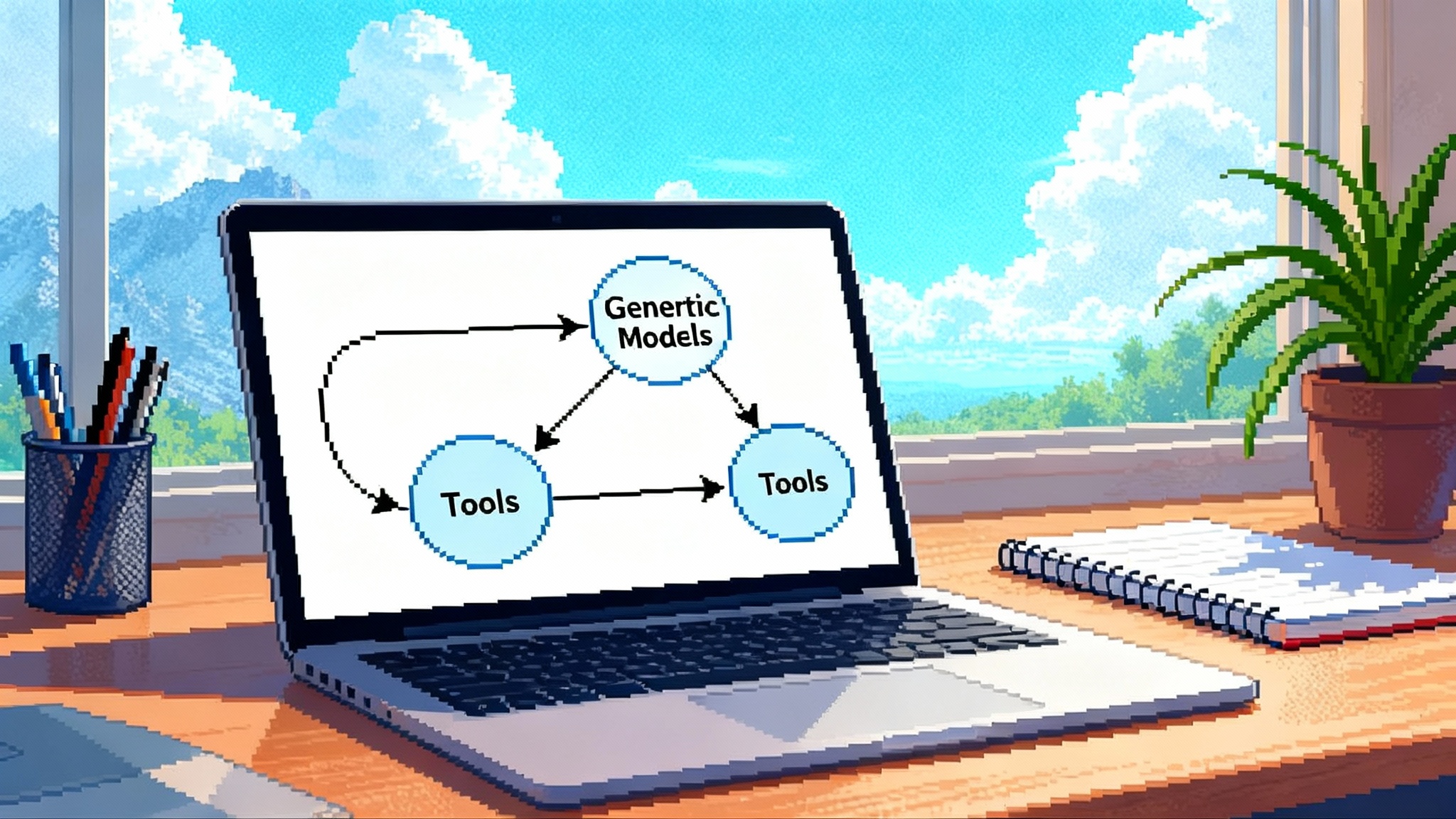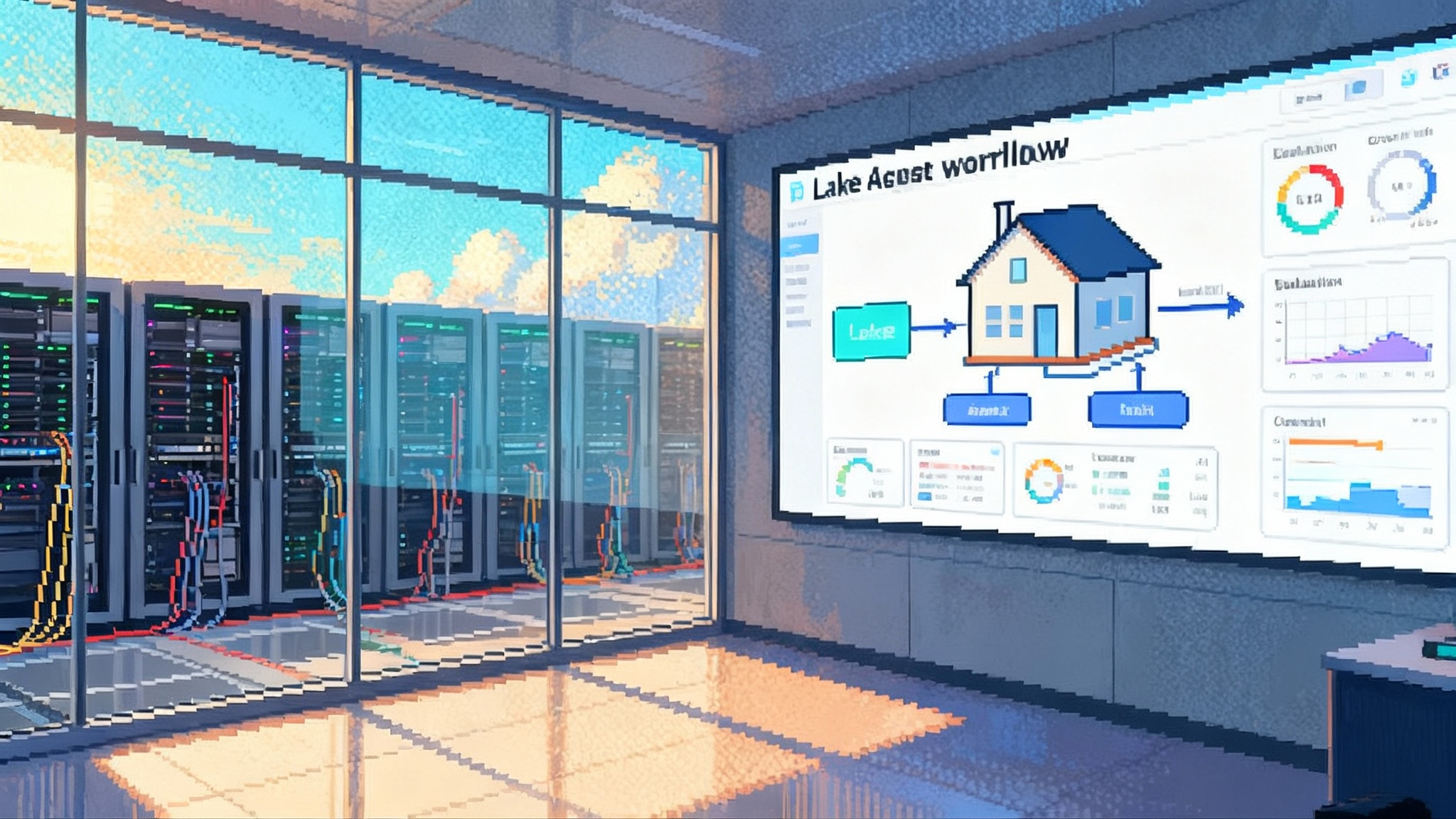Agentforce 3 shifts the AI race to control, scale, and trust
Agentforce 3 reframes the AI platform race around control, scalability, and trust. With Command Center observability, native MCP interoperability, and automatic model failover, Salesforce pushes agents from demos to dependable digital labor.

The enterprise agent race just changed
For two years, most AI platform debates revolved around model quality. The smartest model, the longest context window, the top benchmark scores. With Agentforce 3, Salesforce pushes the conversation to a more practical frontier: control, scale, and resilience. The release centers on three pillars that matter when agents move from demos to production across thousands of seats: observability with a new Command Center, interoperability through native Model Context Protocol support, and reliability via automatic model failover. It also arrives with FedRAMP High authorization in Government Cloud Plus, which opens a credible path for public sector deployments. For official details, see the Salesforce’s Agentforce 3 announcement.
If you have been tracking the broader agent ecosystem, this turn echoes patterns we saw when cloud-native apps went from hobby to mission critical. The winners were not the flashiest frameworks. They were the stacks that made it easy to observe, govern, and iterate without breaking production.
From model supremacy to operational control
Benchmarks still matter, but the late 2024 and early 2025 wave of production pilots exposed a different bottleneck. Leaders struggled to see what agents were doing, to measure outcomes, and to iterate with discipline. Teams hit the seams between tools. Each new agent capability often required a bespoke integration, slowing rollout and creating governance gaps.
Agentforce 3 reframes the problem. It treats agents as digital labor that must be measured, governed, and continuously improved. The architecture emphasizes observability signals, identity and policy controls, and standardized connectivity so that agents can safely take action across enterprise systems. In short, it optimizes the pipeline from idea to impact, not just the prompt to token stream.
Command Center: observability for the agent era
Agentforce Command Center is a single pane of glass for understanding how agents behave. Think of it as a network operations center for digital labor. Teams can track latency, error rates, escalations, and task success. They can drill into session traces to see how an agent identified a topic, which tools it invoked, what data it grounded on, and why it escalated. This closes the loop between building an agent and operating it at scale.
A few implications stand out:
- Measurement becomes systematic. Instead of scattered dashboards and log scraping, leaders get consistent KPIs tied to business outcomes such as cost per resolution, time to answer, or containment rates.
- Troubleshooting accelerates. Detailed traces reduce blind debugging, and alerts let supervisors intervene before a service-level breach.
- Governance integrates with operations. Because activity is observable, policy exceptions and quality risks surface in the same place teams manage performance.
This observability layer also enables a real deployment rhythm: configure and instruct an agent in Agent Builder, test at scale in a dedicated Testing Center, then monitor and optimize in Command Center. Teams can set a weekly cadence to ship improvements with confidence, turning agents into living systems rather than one-off launches.
For a broader view of how mature organizations operationalize agents, compare the practices described in our Notion 3.0 agents playbook. Many of the same operational muscles show up here.
Interoperability: native MCP as the universal connector
The second pillar is interoperability, and the big news is native support for the Model Context Protocol. As more platform vendors and tool builders adopt MCP, the integration cost per new capability drops. An MCP server exposes a tool’s functions in a standard way. An MCP client, like Agentforce, can discover those capabilities, negotiate permissions, and invoke them without bespoke glue.
For enterprises, the value is twofold:
- A standardized on-ramp to connect agents with systems your teams already use, from content stores to payments to communications.
- Lower long‑term integration debt. MCP servers for common tasks can be reused across different agent projects and even across business units.
Agentforce pairs this open connectivity with policy enforcement, identity controls, and session tracing. Those are the prerequisites for letting agents take action with minimal risk. The net effect is a faster path from proof of concept to production, with less bespoke code to govern.
Interoperability is not just a Salesforce story. We expect deeper cross-platform alignment similar to what we covered when Claude joins Microsoft 365 Copilot and when we examined Google's AP2 for commerce. Agentforce 3’s MCP focus slots neatly into that momentum.
Resiliency: automatic model failover becomes table stakes
Complex agent flows are brittle when any single model or provider has an outage or a lag spike. Agentforce 3 introduces automatic, latency-based model failover. If response times spike or a provider is degraded, traffic shifts to an alternative model without operator intervention. This stabilizes the user experience during incidents and pushes teams toward a portfolio approach to models based on strengths and cost rather than vendor lock‑in.
In practice, operations teams will set policies like preferred model order per use case, error budgets that trigger failover, and cost caps by region or time of day. Reliability moves to the platform layer, not inside each agent configuration. That separation of concerns makes it simpler to maintain many agents while preserving consistent service levels.
What FedRAMP High in Government Cloud Plus unlocks
Agent platforms have courted the public sector from the start. The barrier was authorization. With FedRAMP High in Government Cloud Plus, Agentforce 3 clears the threshold that many federal civilian agencies require for cloud services handling sensitive unclassified data. That matters for procurement and for operations. The controls, logging, and isolation patterns that support authorization align closely with the operational controls an agency needs to run agents responsibly.
Government programs can now plan agent rollouts in areas like benefits triage, grant intake, compliance screening, and contact center augmentation. The move also makes it easier for state and local governments to piggyback on federal standards, speeding time to contract and reducing due diligence overhead. For a concise policy reference, see FedRAMP’s own FedRAMP is mandatory guidance.
Standards: a turning point for agent interoperability
- MCP will catalyze a vendor-neutral ecosystem. As more tools publish MCP servers and more platforms ship MCP clients, the economics of adding capability improve. Expect a marketplace of vetted MCP servers for domains like finance, HR, logistics, and healthcare, each with clear security and data-handling profiles.
- Telemetry standards will matter. Agentforce 3 leans on standard tracing concepts so agent signals can flow into existing observability stacks. That encourages a shared vocabulary between AI platform teams and SRE or SecOps teams.
- Identity and policy will consolidate. OAuth-based consent, attribute-based access control, and workload identity are converging into a coherent model that agent platforms can enforce across MCP-connected tools.
The net effect is fewer bespoke adapters and a faster, safer path to give agents the actions they need to be useful.
Vendor ecosystem: marketplaces and partner gravity
Agentforce 3 expands a marketplace of partner services that agents can invoke with minimal configuration. This marketplace dynamic matters for both buyers and builders:
- Buyers get a vetted catalog with deployment patterns and policy templates. That cuts discovery and integration time.
- Partners gain a clear distribution channel. Instead of selling a custom integration project, they can publish an MCP server with documentation, controls, and example actions. The economics favor repeatable, governed building blocks over one-off services.
- Platform gravity increases. As marketplaces fill with credible building blocks, platforms that solve governance and observability attract more partners, reinforcing network effects.
Expect an arms race on curation and trust signals. The marketplaces that provide the strongest evidence of control maturity, audit readiness, and cost transparency will win enterprise mindshare.
Procurement and contracting: what changes now
FedRAMP High authorization reduces friction, but it does not eliminate due diligence. Here is how procurement is likely to shift:
- Faster path to ATO reuse. Authorization packages and documented controls can be reused across agencies and programs, reducing time to production.
- Contracts will pivot to outcomes. Instead of paying for speculative usage, agencies will push for SLAs tied to resolution times, containment rates, and cost per case. Command Center metrics make that measurable.
- Statement-of-work patterns will standardize. Expect templates for pilot-to-scale rollouts, including data ingestion scopes, red-teaming and testing requirements, and performance gates to unlock higher volumes.
- Marketplace procurement will grow. As MCP servers and agent actions become catalog items, agencies can acquire capabilities as modular components under existing schedules.
Private sector buyers should mirror this approach. Standardize your evaluation criteria around observability, identity, action governance, and failover rather than just model specs.
Real-world rollouts: a playbook that works
Enterprises that succeeded with early agents followed a pattern that Agentforce 3 formalizes:
-
Start with a narrow, high‑volume flow. Claims status, password resets, appointment scheduling, subscription changes. These offer clear before-and-after metrics and fast returns.
-
Ground with trusted data. Use data libraries and policy-aware retrieval. Define guardrails for which systems the agent may read and write.
-
Instrument everything. Turn on full session tracing before you scale. Decide on the KPIs that matter and set alert thresholds.
-
Set up a weekly improvement loop. Ship changes driven by Command Center insights. Track how each change moves your KPIs.
-
Scale horizontally. Once you hit accuracy, cost, and latency thresholds, add adjacent flows and channels. Reuse MCP-connected capabilities whenever possible.
-
Plan for failover and continuity. Define default behaviors during model or tool degradation. Make sure supervisors can escalate and take over.
If you are building a multi-model strategy, the lessons from our coverage of Claude joins Microsoft 365 Copilot apply here as well, especially around routing and guardrails.
Governance: from principles to enforceable controls
Most governance documents say the right things. The question is whether your platform can enforce them. Agentforce 3’s stance on observability, identity, and actions turns governance into operational reality:
- Policy-aware actions. Agents execute bounded actions with explicit scopes, role checks, and logging. That reduces blast radius and simplifies audits.
- Human in the loop by design. Escalation paths and approvals are not bolted on later. They are visible and measurable from day one.
- Audit-ready telemetry. Session traces and activity logs align with control families that auditors care about, from access control to incident response.
As you adopt agents, align your governance council’s checklists with the platform’s native controls. Avoid policies that require manual policing if the platform can enforce the same outcome automatically. Treat policy mapping and rightsizing as a product backlog, not a once-a-year review.
Cost: measuring value with eyes open
Agentforce 3 encourages rigorous cost tracking. Three practical ideas:
- Tie spend to unit outcomes. Use metrics like cost per resolution, cost per successful action, or cost per minute saved to compare flows and spot where tuning pays off.
- Use model diversity strategically. Automatic failover supports a cost-aware model portfolio. Route low-risk tasks to cost-efficient models while reserving premium models for complex cases.
- Watch integration spend. MCP reduces bespoke integration costs, but governance work still exists. Budget for playbooks, policy mapping, and security reviews that scale across multiple flows.
The goal is to make digital labor a clean line of business with a clear P and L, not a fuzzy shared service that is difficult to optimize.
Workforce impact: augmentation first, redeployment next
In the near term, the biggest gains come from augmentation. Agents handle repetitive tasks so humans can focus on judgment, empathy, and exception handling. Over time, some roles will shift as agent coverage expands, but the pattern is more about redeployment than replacement. Supervisors become orchestrators who tune flows, approve actions, and manage exceptions with real-time data.
Two practices help:
- Invest in agent operations skills. Teach frontline leaders to read traces, interpret dashboards, and request safe configuration changes.
- Create change windows. Treat agent configuration like software releases. Schedule changes, measure impact, and roll back if needed.
What to watch next
- MCP adoption by major SaaS vendors. The more first-party MCP servers exist for core systems, the faster enterprises will scale useful actions.
- Deeper OpenTelemetry alignment. Expect richer semantics for agent steps, not just generic spans, so downstream tools can reason about agent quality.
- Pricing models that favor outcomes. As Command Center makes outcomes measurable, pricing will move toward success-based tiers.
- Public sector pattern kits. Look for pre-approved playbooks mapping agent capabilities to mission flows and control requirements.
How to act now
- Identify three high-volume flows and baseline their metrics across accuracy, latency, and cost.
- Stand up a small agent operations crew. Give them responsibility for weekly improvement cycles and clear gates for expansion.
- Catalog your critical actions and data sources. Prioritize MCP-connected capabilities to avoid bespoke integrations.
- Align procurement with observability and control. Bake Command Center metrics and failover policies into your contracts and SLAs.
- For public sector teams, sync early with your security office. Leverage authorization artifacts and plan a reuse-driven path to ATO.
Agentforce 3 marks a pivot in the agent-platform race. It rewards platforms that help enterprises control, observe, and scale safely rather than merely chase benchmark headlines. If the next year belongs to teams that turn agents into reliable digital labor, the winners will be the platforms that make control and scale the default setting.




